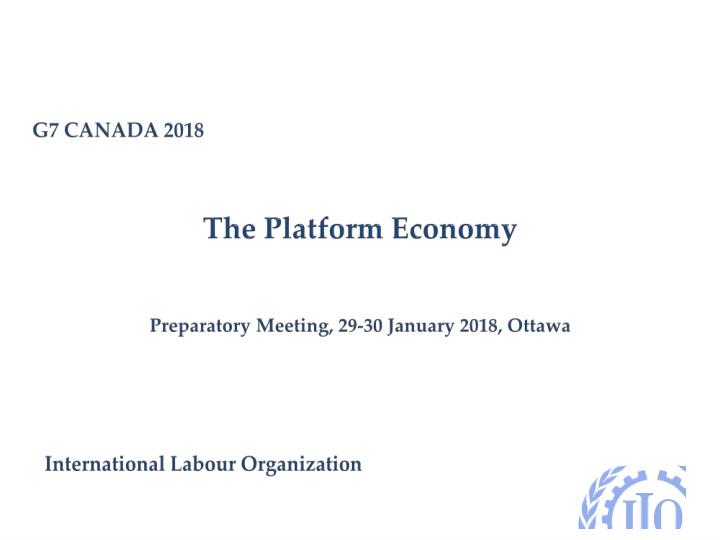



I. What is the Platform Economy? Platform Economy Labour platforms Capitalplatforms Crowdwork Work on-demand via apps Virtual activities or services that Physical activities or services are performed independently that are performed locally of the location
II. Scope of the Platform Economy Where are crowdworkers located? Source: ILO Survey of Crowdworkers, 2017.
II. Scope of the Platform Economy • 600,000 workers (equalling 0.4% of total U.S. employment) are working in the gig economy • 3% of UK adults performed work via online platforms at least once a week • Between 1% and 5 % of the adult population of the EU has earned some income in the platform economy at some time
III. Characteristics of Platform Work Findings from ILO’s survey of crowdworkers • Important source of income • Crowdworkers appreciate the flexible work arrangement • Risk of underemployment • Low pay rate • Unpaid searching time • Monitoring and rating system • Mechanism to raise concerns
III. Characteristics of Platform Work Findings from ILO’s survey of crowdworkers Mechanisms to raise concerns Source: ILO Survey of Crowdworkers, 2017.
IV. Employment status Employees or independent contractors? • Venue where this issue will be resolved • Lack of social protection risk of informality • Challenges to freedom of association and collective bargaining
VI. Policy questions • How can existing legal and institutional frameworks address platform work? Are they “fit for purpose”? • What enforcement mechanisms are needed? • What are the right mechanisms to address platform workers’ grievances? • How can social protection systems cover platform workers? • How can we guard against the dangers of informality? • How can challenges of representation and organisation be addressed? • Is an augmented workforce desirable?
Recommend
More recommend